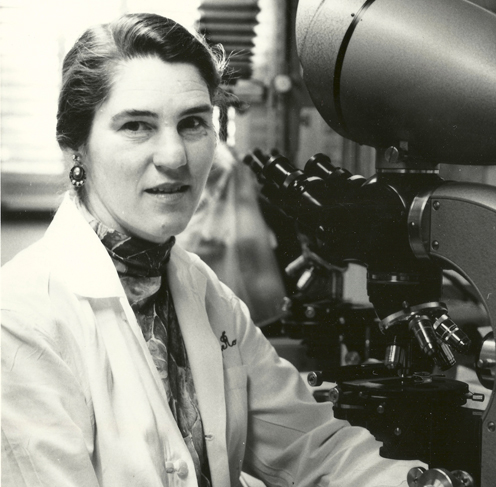At the age of 15, Janet Davison entered the Hutchins College of the University of Chicago, simultaneously completing her final two years of high school and first two years of college.
Janet Davison learned to value reading and independence, attributes critical to her career as a researcher. She earned a Bachelor of Philosophy in 1944 and a Bachelor of Science degree in 1946 but waited nine months to enter medical school because the University of Chicago had met its quota of women. Following her marriage, Dr. Janet Rowley worked at a clinic for children with Downs Syndrome, a genetic disorder caused by an extra chromosome 21.
In 1962, she returned to Chicago after a year at Oxford University where she learned newly developed techniques of chromosome analysis which she applied to study chromosomes from patients with leukemia. In 1971, she completed a second sabbatical at Oxford. Back home, while photographing the chromosomes of leukemia patients she arranged them in pairs, resulting in the discovery that the chromosomes of a patient with acute myeloid leukemia (AML) had made a trade. Specific chromosomes had broken off and moved to others: a translocation. She also discovered that patients with chronic myelogenous leukemia (CML) had a different translocation. The transfer from one chromosome to another meant that important genes regulating cell growth and division could not now be considered in their normal position. The ensuing result meant uncontrolled cell growth of cancer. Later she and colleagues found a third translocation in a different rare type of leukemia and her research was finally accepted and enabled the development of a highly successful cancer therapy drug.
to Dr. Rowley followed and she received honorary Doctor of Science degrees from 14 institutions. She died in 2013 from complications of ovarian cancer at the age of 88 after a life that had an enormous impact in cancer research and treatment.

